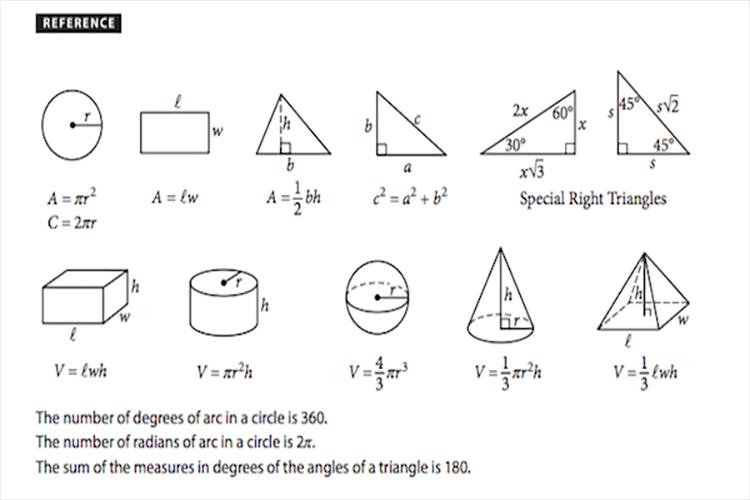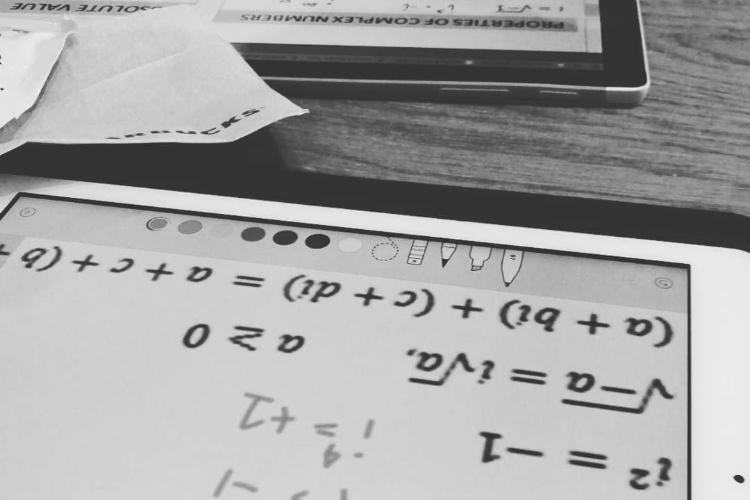by Sarah Cage
What math is on the SAT? You may have such a question in mind, especially if you are about to get ready for the big exam. If you want to be prepared for the SAT, especially in math, you should know the facts and the general coverage. It is not about whether you have the superpower skill to conquer the subject – it is about using the proper approach.
Contents
As you are well aware of, the SAT is the admission test with its own standards used by colleges to ‘filter out’ their applicants. Students who want to apply to their dream college needs to take the test. The higher score they get, the better their chances are in being admitted. Moreover, higher SAT score will make your way easier and somewhat more flexible. You see, you can apply to many colleges. If you have a higher score, your chances to be admitted to all of them will be bigger. However, if your score is low, be ready to get some rejections.
Some students with impressive high SAT scores are able to get into their dream Ivy League college and get a scholarship along the way. It’s because the colleges know of these students’ potential and they are willing to do their best so the students will go to their schools. As you can see from this scheme, having a high SAT score gives you a better sense of freedom and also the flexibility to choose what you want.
Now, what math is on the SAT? First of all, the SAT consists of two major fields: Reading and Writing and Language, and then Math. The math section itself will be divided into 2 sections: the one with a calculator and the one without. In the calculator section, you have 55 minutes to complete the problems. In the non-calculator section, you only have 25 minutes to complete them all.
Each section has its own multiple choice problems, followed by a few numbers of grid-in problems. In the grid in section, students have to produce their own responses and answers instead of choosing one from the already available answers. Here is the general breakdown:
| Section | Number of questions | Time |
| No Calculator | 15 multiple choices and 5 grid in | 25 minutes |
| Calculator | 30 multiple choice and 8 grid in (including one question for Extended Thinking) | 55 minutes |
| Total | 58 questions | 80 minutes |
During the test, you are also given access to the reference sheet info. The sheet may look like the following:

You may find this reference sheet to be handy, especially if you can’t really remember the formula. However, most experts believe that memorizing the formulas will be even better than having to flip those pages back and forth. Even better, you can always understand the concept instead of memorizing it – it will be helpful on your memory better. This is a reference sheet that is available for geometry – and most people believe that geometry only makes up to 10% of the total questions.

When it comes to understanding what math is on the SAT, you need to remember that there are 3 major categories for math SAT: Passport to Advanced Math, Data Analysis and Problem Solving, and Heart of Algebra. These categories focus on data interpretation (from graphics and table), equation solving, and algebra. The 3 categories reach around 90% of the questions. What about the remaining 10%? That’s when the Additional Topics are included, such as complex numbers, basic trigonometry, and geometry.
In Heart of Algebra, the questions are related to graphs, functions, inequalities, and linear equations. The official topics include linear function problems, linear equations solving systems, interpreting linear functions, and systems of linear inequalities. Here are some common examples of task summaries:
In Passport to Advanced Math, the questions are related to linear equations. Most of them are about nonlinear expressions orin which a variable is raised, especially if the exponent is one or not zero. The questions will require you to work with word problems, exponential expressions, and quadratic equations. The official topics generally cover functions, isolating quantities, polynomial graphs and factors, rational and radical exponents, nonlinear expressions interpretation, and structure in expressions. Here are some common examples of task summaries:
In Data Analysis and Problem Solving, the questions are related to percentages, rations, data from tables and graphs, and rates. The official topics usually include data collections (followed by conclusions), data inferences, table data, percents, graphs key features, units, and also scatterplots. It also includes distributions of shape, spread, and center – along with exponential and linear growth and graphs key features. The topic may also include rates, proportions, and ratios. Here are some common examples of task summaries:
And let’s not forget the Additional Topics that covers the 10% aspect of the test. The official topics include circle equations, circle theorems, right triangle geometry, complex numbers, volume word problems, congruence and similarity, and right triangle word problems. Here are some common examples of task summaries:
Be prepared to deal with certain topics that ‘force’ you to use multiple concepts and skills. Although some problems may stand on its own, it is also possible that some problems combine all of those categories and topics, increasing the difficulty to challenge your logic.
So, what math is on the SAT? To understand the format and content of SAT math, you should really take a look at the key features. Once you are familiar with them, identifying them will be easier. What are they?
Besides all of those key features, there are also other features, such as:
Why is it important to understand those key features? The practice will get you familiar with the types of questions, the various options of answers, and the concept. For instance, if you practice quite often, you will see that one problem can lead to various steps in producing the answers.

The problem with SAT is that it is time-limited which means that you need to figure out the answers fast – while making sure that you answer everything correctly. The best way for you to get accustomed to the questions is to practice – as much as you can. Getting yourself different kinds of problems and also different kinds of test forms will help. Not only it helps you get a sense of familiarity, but it will also get you prepared for different kinds of challenges.
So, what math is on the SAT? Keep in mind that SAT math problems are generally unique – it has its own SAT specific requirements and ways. Get yourself used to it and you should be fine. There are many different kinds of tests to take. There are some online tests (from various sources) that you can use for practice. You can also try the official practice tests – these ones will help you diagnose and uncover your weaknesses as well as your strength. If you don’t really know where to start, ask for a help. You can go to your trusted teachers or the school counselor – they should be willing to lend a hand.\

Some people may believe that scoring 800 for math is too much – it seems too good to be true. However, if you want to be sure that you will be admitted in your dream college, scoring more than 1540 is a good way. Moreover, there is no such a thing as impossible method or manner. If you believe in yourself and you are determined enough to reach it, then you should be able to do so.
Scoring 800 for math is a part of the strategy to perform and excel well in the area. In the event that you have flaws in other areas, this score should be able to make up for it. Again, if you manage to score more than 1540, then you won’t have to worry about anything else. You are prepared for the test – you only need to focus on your college applications. But if your score is still below 1520, then you should work extra hard.
In some cases, scoring a perfect 800 is important if you have two major scenarios in mind. If you are going to take science or quantitative major, scoring the perfect math will make your path smoother. If you are going to take chemistry, statistics, math, or physics, the scores are crucial. Second, if you are dream college is included in the technical schools (and the highly selective ones) such as Caltech or MIT, then the scores will be a big deal. After all, you will be competing against other smart people (especially in math) so the college wants to admit only the best people. By scoring 800, you have at least proven yourself to be one of the best.

One of the biggest reasons why students fail in math is because they don’t have the confidence. Once you don’t believe in yourself or you doubt yourself of being able to do it, then you are doomed. If you have doubted yourself, it’s time to straighten up your mindset. You are definitely able to do this!
Even if you aren’t really good in math, it isn’t impossible to reach the perfect 800. You see, SAT score is basically the reflection of how smartly you learn (and study) and how hard you try. It’s not you being genius or super clever – it is all about your hard work. Keep in mind that SAT is designed as a national test so it can’t be overly difficult – it needs to have a fair playing level for all students. Here is a secret about what math is on the SAT. It basically tests your knowledge and skill in geometry or algebra, but the concepts are made unfamiliar or strange – which make them seem difficult or unfamiliar. In reality, those problems are the ones you learn in high school. If you have prepared yourself, you will be ready. But if you don’t (and you take the test for granted), then you may fail.
So, what are the tips in facing SAT math?
· Be prepared of weird or (seemingly) unfamiliar problems. If you allow yourself to read the questions (and you have prepared yourself), you should be able to solve them. In fact, you may think, “Hey, I’ve done this before and I know some ways to solve it.”
· Be familiar with SAT question types. If it is possible, master it. It is possible if you allow some months of preparation
· Practice a lot. The more questions you deal with, the more you will master it. The many problems allow you to know (and learn from) your mistakes.
· Draw the correct concepts that you already familiar with and know to provide the solution to the questions
Keep in mind that there are a total of 58 questions in math SAT section. The more you miss, the more scores you will lose. Here is a basic score based on the correct raw score.
| Raw Score | Test 1 | Test 2 | Test 3 | Test 4 |
| 58 | 800 | 800 | 800 | 800 |
| 57 | 790 | 790 | 790 | 800 |
| 56 | 780 | 780 | 780 | 790 |
| 55 | 760 | 770 | 770 | 790 |
| 54 | 750 | 760 | 750 | 780 |
| 53 | 740 | 750 | 740 | 770 |
| 52 | 730 | 740 | 730 | 760 |
| 51 | 710 | 730 | 720 | 750 |
So, you know about what math is on the SAT and the important elements to nail the perfect 800. However, such an idea may discourage you, especially if math is your biggest flaw. But then again, you should know that there are some effective and working strategies to help you with your study.

Even the brightest math students have their own weakness. No one is perfect. Some students may not understand the underlying materials while some have problems with their time management. Here are some ways to deal with the issue:
· On the practice test, choose the math section only.
· Use a timer for each section. Set it for the allotted time for the test.
· When you do the practice test, do it as if you were doing the real test
· Once the allotted time for the section runs out and you are ready to move forward, then continue. In case you still aren’t ready to proceed, just keep doing the problem. For every problem that you have changed, mark it as ‘Extra Time’
· Once you are ready, move to the next area. Again, repeat the steps until you have finished.
· Score your test with the score chart and answer key. You should have two scores as the result. The first one is the Realistic Score thatyou have under the normal time. The second one is the Extra Time Score – it is from the problems you marked with the ‘Extra Time’ sign.
If your Extra Time score is less than 700, then you have content weaknesses – which are about deep weaknesses in a few subjects only or weaknesses across different kinds of subjects. The only way to tackle the problem is to practice and develop your own comfort in doing SAT math section.
If your Extra Time Score is more than 700 while the Realistic Score is less than 700, it shows that you have a significant difference between them. If the differences reach 50 points, then your biggest flaw is in the management. Is it because you are generally slow at math? Or you are slowed down because of some particular problems? Basically, the more you practice, the better your improvement will be. That’s why practice is the best solution.
If your Extra Time Score and Realistic Score are more than 700, then you have a greater chance to gain 800. Compare the scores from Realistic One and Extra Time. If the differences are more than 30 points, you need to learn how to solve the problems more quickly. However, if the differences are less than 30 points, you should learn about avoiding making careless mistakes and deal with your weaknesses.

The best way to understand the concept is to do a lot of practice. If you just look at the big picture, it may seem too much. But once you start doing the problems, you will be immersed in questions and problems – and before you know it, you will be drown in formulas and concepts.
Now that you already understand about what math is on the SAT, you should also learn from every mistake you make. Retrace your steps and your methods. What have you done wrong? In which step you are making the error? Have you understood the questions wrong or have you used the wrong formula?
Once you have undergone these stages and you have allowed yourself some time to study, you will see that your skills and your understanding have developed. Now that you already know the facts of what math is on the SAT, you should also know how to study the subject properly.

About Sarah Cage
Sarah Cage is an accomplished education writer known for her insightful and engaging work in the field. With a passion for empowering students and teachers alike, she has made a significant impact through her thought-provoking articles and research papers.
 |
 |
 |
 |